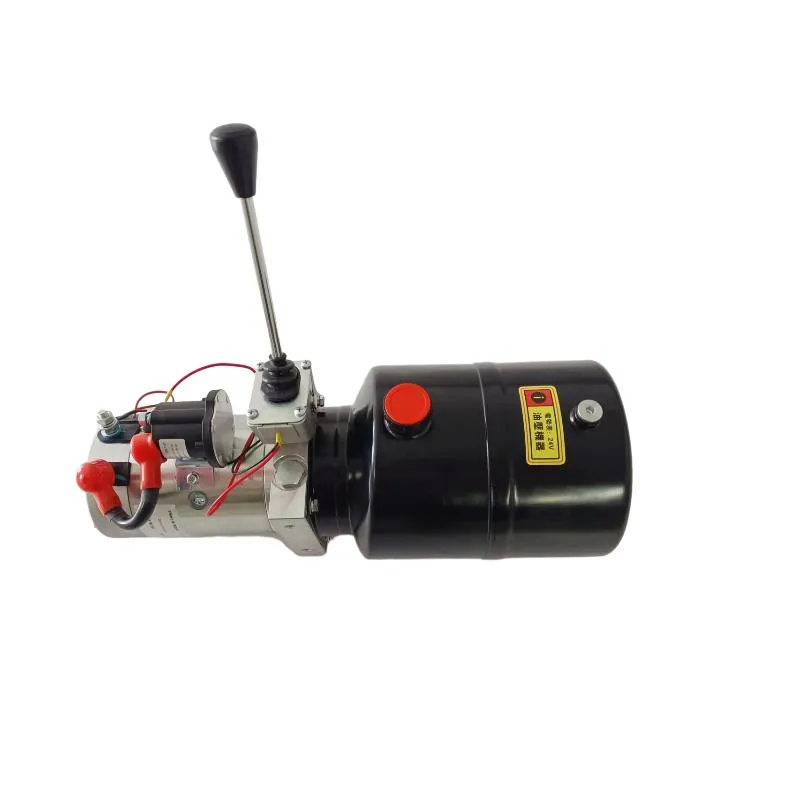Dec . 11, 2024 10:04 Back to list
High-Performance Rod Seals for Hydraulic Cylinder Applications and Efficiency
Understanding Rod Seal for Hydraulic Cylinders
Hydraulic cylinders are critical components in various industries, providing the necessary force to enable machinery to perform tasks efficiently. Among the many components of a hydraulic cylinder, the rod seal plays a pivotal role in ensuring optimal performance and longevity of the system. This article delves into the importance of rod seals, their types, functions, and considerations for selection and maintenance.
What is a Rod Seal?
A rod seal is a sealing device that prevents hydraulic fluid from leaking out of the cylinder while facilitating the movement of the piston rod. It is strategically placed in the rod housing of the hydraulic cylinder, ensuring that the hydraulic pressure is maintained within the cylinder while keeping contaminants out. Effective rod seals are crucial for the reliability and efficiency of hydraulic systems.
Functions of Rod Seals
Rod seals serve several essential functions in a hydraulic cylinder
1. Leak Prevention The primary function of a rod seal is to prevent hydraulic fluid from leaking out of the cylinder. This leakage can lead to reduced efficiency and increased operational costs.
2. Contaminant Exclusion Rod seals also help to keep dirt, dust, and other contaminants from entering the cylinder, which can cause wear and damage to the hydraulic components, potentially leading to failure.
3. Pressure Maintenance A well-functioning rod seal ensures that the hydraulic pressure is maintained within the cylinder, allowing for smooth and controlled movements of the piston.
4. Guiding the Piston Rod In addition to sealing, rod seals can also help in guiding the piston rod, ensuring alignment and stability during operation.
Types of Rod Seals
There are various types of rod seals tailored for different hydraulic applications, each with distinct materials and designs
rod seal hydraulic cylinder product

2. Double Acting Seals Suitable for cylinders that exert force in both directions, these seals allow for efficient operation regardless of the direction of force.
3. U-Cup Seals Shaped like the letter U, these seals can accommodate a large sealing area and are often used in applications requiring high-pressure capabilities.
4. V-Ring Seals Often made from rubber or similar materials, V-rings provide excellent sealing while allowing for some flexibility, making them suitable for dynamic applications.
5. Composite Seals These seals combine materials to optimize performance, offering advantages such as better wear resistance and reduced friction.
Factors to Consider When Choosing Rod Seals
Selecting the right rod seal is critical for the performance and longevity of a hydraulic cylinder. Here are key factors to consider
1. Material The seal material impacts its performance under various temperatures and pressures. Common materials include nitrile, polyurethane, and PTFE, each offering different benefits and limitations.
2. Operating Conditions The environment in which the hydraulic cylinder operates—such as temperature extremes, exposure to chemicals, and levels of contaminants—should inform the choice of seal.
3. Pressure Ratings Ensure the selected rod seal can withstand the maximum pressures that the hydraulic system will experience without compromising performance.
4. Compatibility with Fluid The rod seal material must be compatible with the hydraulic fluid used in the system to prevent chemical degradation.
5. Installation and Maintenance Consider how easy the seals are to install and whether they require special maintenance to ensure optimal performance over time.
Conclusion
Rod seals are integral components of hydraulic cylinders that ensure efficiency, reliability, and longevity. Understanding their functions, types, and selection criteria is essential for anyone involved in hydraulic systems, whether in manufacturing, construction, or any other industry reliant on hydraulic technology. By choosing the right rod seal and maintaining it properly, industries can minimize downtime, reduce costs, and enhance the performance of their hydraulic systems.
-
1.5 Ton Flipping Oil Cylinder 70/82-40-217-720 - Hebei Shenghan Hydraulic Machinery Co., Ltd.
NewsSep.01,2025
-
1.5 Ton Flipping Oil Cylinder 70/82-40-217-720-Hebei Shenghan Hydraulic Machinery Co., Ltd.
NewsSep.01,2025
-
1.5 Ton Flipping Oil Cylinder-Hebei Shenghan|Precision&Custom Solutions
NewsSep.01,2025
-
1.5 Ton Flipping Oil Cylinder 70/82-40-217-720-Hebei Shenghan Hydraulic Machinery|Precision Engineering&Customization
NewsSep.01,2025
-
1.5 Ton Flipping Oil Cylinder 70/82-40-217-720 - Hebei Shenghan | Hydraulic Solutions, Customization
NewsSep.01,2025
-
1.5 Ton Flipping Oil Cylinder 70/82-40-217-720 - Hebei Shenghan Hydraulic Machinery Co., Ltd.|Precision Engineering&Customizable Hydraulic Components
NewsSep.01,2025
